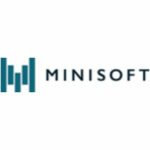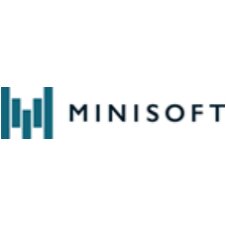Industry interview with Minisoft: Ruling the chase
This article was also featured as an industry interview in the June 2016 issue of Briefing. To read the issue in full, download Briefing.
You could possibly describe the evolution of law firm account management as the adaptation of processes in line with a more sophisticated understanding of what a firm needs to be chasing to maximise its chances of success.
“Our business is to follow – or ideally to anticipate – what legal business needs,” says Joe Zoghbi, managing director of Minisoft. “First, it was all about good credit control – chasing payment to ensure your bills are simply paid. That’s not to say that isn’t still important, of course. “But firms then started to realise they really needed to chase the internal client,” he continues. Bills can’t be paid if they aren’t first sent out in a disciplined fashion. “Focus moved to the fee earners, the time keepers, to ensure the management of work in progress.”
On to today, and firms are now including the chase of what the future has in store. “The focus has moved very clearly to forecasting demand – getting a more accurate understanding of how much money could be billed in a certain period of time before the work is even done,” says Zoghbi.
Collecting thoughts
This latest is the rationale behind the most recent enhancement to Minisoft’s ARCS 2G solution for accounts receivable and work in progress – a revenue-forecasting module.
“The firm can compare how much has been collected to previous months and years – including by practice groups, in different combinations – and uses trends to reach an estimate for how much they could potentially collect over a future period.
“Also important is having all cash efforts located in one application. Business practices, and the rules to follow, can be communicated to all the key stakeholders they affect automatically. Data is updated in seconds, and access to that information with a minimal human effort saves the firm time, which of course also saves more money.”
Moreover, that level of transparency also provides incentivisation levers for driving productivity.
“Fee earners, collectors and administrators can quickly check how much they’ve personally agreed to bill or collect, and how far they’ve progressed against their goals,” says Zoghbi. “It can help to create collaborative momentum around the important end-of-year push, for example.” There’s even an element of driving internal competition. “Clearly, you can measure the difference between individual contributions.”
Exception rules
However, as neither firms nor their clients are identical, Zoghbi says it’s particularly important that account management software is flexible.
“You need to manage by exception. You can’t treat every client the same way. Statements and other financial documents aren’t always sent out in bulk, according to blanket rules. Processes can be customised to the account.
“If a client is supposed to pay on day 60, clearly you don’t want to be bothering them on day 35 – but if someone has payment terms of 30 days, you’ll want to start chasing them early.
“Similarly, one client may need to be completely excluded from a process – and fortunately that can be done with a click of a button. They’ll be automatically excluded in future.”
Another aspect of flexibility is the convenience of consuming information and taking timely actions on multiple platforms. ARCS 2G now has an intranet browser version, 2G Express, for teams to track collections, view reports, prioritise and make decisions on tablets instead of at their desks. It was designed for those wanting to provide real-time answers to questions.
“Information security is such a big management concern of course, so the suite of ARCS 2G solutions can also meet the firm’s specific access requirements there, from the most stringent to, frankly, the lax,” says Zoghbi.
“Software is a living organism. Firms should expect something that develops through regular enhancements over time. There are always ways to improve – and we spend a lot of time listening to clients’ needs through user groups around the world.”
Most recently, for example, a partnership with Blue Car Technologies and an investment in integration of ARCS 2G communications into a document library means statements can be saved to a document management system automatically. It’s possible to catalogue and move statements across to that library.
But crucially, ARCS 2G isn’t dependent on other systems. As with the flexibility to adapt to a firm’s multi-faceted collections strategy, the system can just as easily follow as the firm switches to entirely new ones.
“As we interface with any professional billing system, if you move to a new billing system, it’s no problem for us to accompany you,” says Zoghbi. In that one sense, at least, it doesn’t matter what the firm’s future holds.



